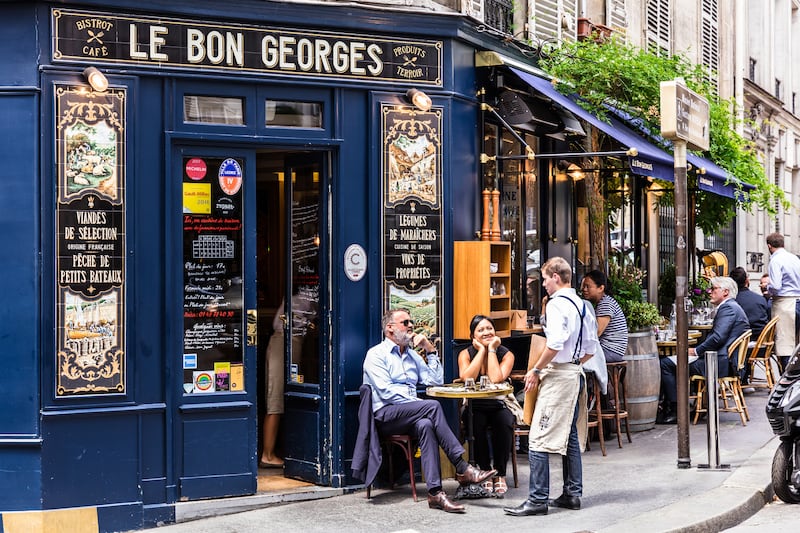With more than 89 million visitors a year, France is officially the world's most popular destination. There are almost countless reasons to visit, from gawping at great art and iconic architecture in one of the world's most beautiful cities, to pulling over by a lavender field in Provence to enjoy a picnic of fresh bread, cheese and wine, Peter Mayle-style.
Although a French holiday can be the answer to many a visitor’s dreams, it can get pretty pricey, especially if you’re travelling with the whole family.
The good news is that it needn’t cost the earth, and the following advice will help keep your spending down and make everything more affordable – even in Paris.

Which are the less expensive regions?
The rule of thumb is that everything gets cheaper once you leave Paris. There are exceptions – the glamorous stretch of the Côte d’Azur, or a handful of Provencal villages – but you’ll generally get more for your euro outside the capital.
In France, though, you’re spoiled for choice. “There are very few places in France that aren’t beautiful,” says Irish Times Paris Correspondent Lara Marlowe, which means that for every medieval village preferred by a famous Impressionist, or seaside town graced by celebrities in oversized sunglasses, there’s always another surprisingly wonderful alternative.
The Atlantic coast isn't as celebrated as the Mediterranean, gets fewer international visitors but just as much sun. Les Landes, an uninterrupted stretch of beaches between Bayonne and the mouth of the Gironde near Bordeaux, is lined with seaside resorts, decent campsites and some of the country's best surf schools – especially in Capbreton and Hossegor.
To the north of Bordeaux, the Charente-Maritime is thronged with French holidaymakers during August, with usually languid Île de Ré and handsome La Rochelle hosting half of Paris – as beautiful as it is, it's best avoided that month as prices go up, accommodation is hard to come by and you'll spend most of your time sitting in traffic on the tiny island.
If you’re keen on the Mediterranean, a fine alternative to the overpriced glitz of the Côte d’Azur is the much lower-key Côte Vermeille (Vermillion Coast), around the coast close to the border with Spain. It mightn’t have the cachet of the Riviera, but it’s just as pretty: against a backdrop of vineyards (the local wines are excellent) are a series of rocky coves and tiny ports centred on pastel-coloured Collioure, which had its own arty fans in Matisse and Picasso.

If you can live without a view of the sea, you can do as many French do and opt for an inland beach holiday by a lake. Limousin is generally overshadowed by its southern neighbour the Dordogne, but the 10sq km Lac de Vassivière just east of Limoges has a series of beaches, and forests that are popular for walkers and cyclists.
In Burgundy, the huge Morvan Regional Park has a handful of lakes with water-sports centres, while the surrounding countryside has everything from rock climbing and horse riding to mountain biking and orienteering.
But I really want to visit Paris too. Is it as expensive as they say?
There are two Parises: the one the tourists visit, and the one Parisians live in. If you plan carefully you can enjoy the former for the cost of the latter.
Staying in the tourist zones around the Louvre, Eiffel Tower or Champs-Élysées will cost you a lot more than basing yourself in other areas, such as Bastille and the eastern arrondissements (the 11th, 12th, 19th and 20th) – where you’ll also find superb local markets and some of the best nightlife in the city. The southern arrondissements around Montmartre are also pretty affordable, but there’s less going on.
Similarly, avoid the grands cafes of the Boulevard Saint Germain, or pretty much anywhere within sight of a major monument. Not only is everything wildly more expensive (a small, watery beer for €9, anyone?) but the only Parisians you’ll see there are the waitstaff busy affirming the city’s surly reputation. It costs more to sit down than to drink at the bar, and a bar in the 18th arrondissement is always cheaper than one in the 8th.
Paris might be a major metropolis, but it's a pretty compact city and easy to get around. And while exploring the city on foot is both recommended and cost-effective, the metro is the easiest way to get around – and the cheapest way to use it is with the unlimited use Navigo Découverte card, which comes in a daily (€7.50) or weekly (€22.80) version and also gives you unlimited bus and RER travel as far as Versailles and Disneyland.

Paris is also increasingly bike-friendly, with lots of cycle lanes and timed car-free zones – perfect for exploring the city using a standard or electric bike from the Vélib bike-share scheme, which has about 1,400 docking stations around the city.
Exploring Paris’s overwhelming cultural patrimony isn’t that expensive either. All national museums are free on the first Sunday of the month, so you can visit more than 20, including the Arc de Triomphe, the Musée d’Orsay, the Louvre and even Versailles without spending a penny, although the big hitters usually suspend free Sundays during summer.
Paris’s extraordinary collection of churches are all free, as are its celebrity-filled cemeteries such as Père Lachaise. There are free concerts throughout the year, and free city beaches on the Seine and the Bassin de la Villette during the summer. You can even attend a free fashion show at the Galeries Lafayette, so long as you book well in advance.
Can I eat well without spending heavily?
France may have invented haute cuisine, but the bedrock of French food is regional, country-style cooking based almost exclusively on local produce. This means the best food experiences are invariably local, and the best local restaurants generally only have a handful of dishes presented on a plain menu (or chalkboard) that’s only in French. Use Google Translate if you must, but avoid any restaurant where someone is standing outside enticing you with easy-to-read English-language menus and the promise of the “best [local dish] in town”. It isn’t, and you’ll pay more for the privilege of proving them wrong.
Remember that in France, a menu is la carte; le menu is a two- or three-course deal at a fixed price; also worth looking at is the lunchtime formule, a two-course meal at a fixed price or the plat du jour (dish of the day), a discounted version of an a la carte dish. And be sure to ask for the complimentary basket of bread to be refilled when it’s empty.

No self-respecting restaurant will ever serve a less-than-decent house wine, and if you’re ordering water, be sure to ask for a carafe d’eau otherwise the waiter will assume you want bottled water – even though tap water is perfectly good in France.
Also worth looking out for is the table d'hôte – literally, the host's table – where a hotel or B&B owner in smaller towns will serve a home-cooked dinner with wine to guests for an additional €30 or so; in rural areas, you can book a meal at a farmstay (ferme-auberge; check out bienvenue-a-la-ferme.com). A version of the table d'hôte has become popular in big cities, where communal tables are set up in non-traditional venues and a meal is served for a fixed price.
If you have Michelin stars in your eyes, you can find plenty of one-star spots throughout the country where you can eat a two-course dinner for around €50, not including wine. Many starred chefs will also operate a lower-priced bistro alongside their haute-cuisine restaurant, while Michelin’s Bib Gourmand sign is a good indicator of excellence, minus the hefty price tag.
Finally, there’s the great French tradition of the picnic, which is the ideal reason to visit a local produce market and stock up on charcuterie, cheeses and fresh baguettes. There are picnic tables virtually everywhere, often under cover. In Paris, Lara Marlowe says, the summer picnic by the Seine is an absolute must. There are lots of places to choose from, but her favourite is on the Right Bank just east of the Pont Alexandre III, where you have a fine view of the Eiffel Tower, the National Assembly and Notre Dame.

What about accommodation?
Like everywhere else, demand and location will dictate the cost of accommodation, which means high-season prices in Paris or on the Riviera will be pretty high. Self-catering is one way to keep costs down in the capital, where you will find lots of Airbnb properties available, while outside the bigger cities, the gîte is a very popular option – check out gites-de-france.com, where you can search the huge network of self-catering properties by region, theme and amenities.
You can also bunk down in a chateau, which often aren't all that expensive, especially if you book out of season and divide the cost between a few families. Try loire-chateau.fr for accommodations in the chateau-rich Loire valley, but remember that in France a chateau is often little more than just a country house.
For pure charm and a warm welcome at a really decent price, you won't beat France's network of privately run B&Bs, known as chambres d'hôte. These are spread throughout the country, almost exclusively in small towns and rural areas, and by law they can't have more than five rooms and must serve breakfast. (These are the only accommodations where breakfast is recommended; everywhere else, especially in the big cities, go to the nearest bar, where it's cheaper and better.) You can pick up a list of local chambre d'hôte at the tourist office, or check out chambres-hotes.fr.
France is also a camper’s paradise, with thousands of well-equipped campsites. Municipal campsites are the cheapest of all, but don’t offer the same range of amenities as privately run sites, many of which rent out mobile homes with all the usual mod cons like heating and TVs; the most popular of these fill up quickly in high season so be sure to book ahead.
Any other cost-saving tips?
While the train network is fantastic, full-fare tickets can be quite expensive, so look out for the dizzying array of discounts and deals – station staff are generally great at helping you find the best fares. As a rule, off-peak fares booked more than 30 days in advance are the cheapest; TGVs (high-speed trains) are always more expensive than regular trains; and children between four and 11 travel for half-price (under-fours travel free).
If you're driving, avoid tolled motorways (autoroutes) in favour of lesser roads that are far more scenic. For convenience, the most scenic routes are highlighted in green on Michelin's print and digital maps (viamichelin.com). If you aren't driving but need a ride, car-pooling website Bla Ba Car (blablacar.fr) is a popular and cost-effective option.
Finally, you should avail of the excellent greeter system, where enthusiastic, officially sanctioned local volunteers lead free guided tours of their city or town in exchange for a tip. You'll find them in Paris (greeters.paris), Grenoble (grenoble-tourisme.com), Marseille (marseilleprovencegreeters.com), Lyon (lyon-france.com), Bordeaux (bordeaux-greeters.fr) and elsewhere – check with the local tourist office for details.
This article is part of a series on how to save money while holidaying in Europe. For more destinations, see irishtimes.com/life-and-style/travel











